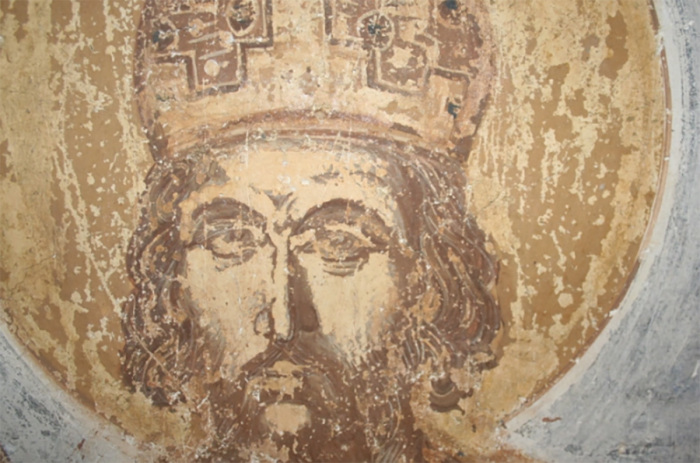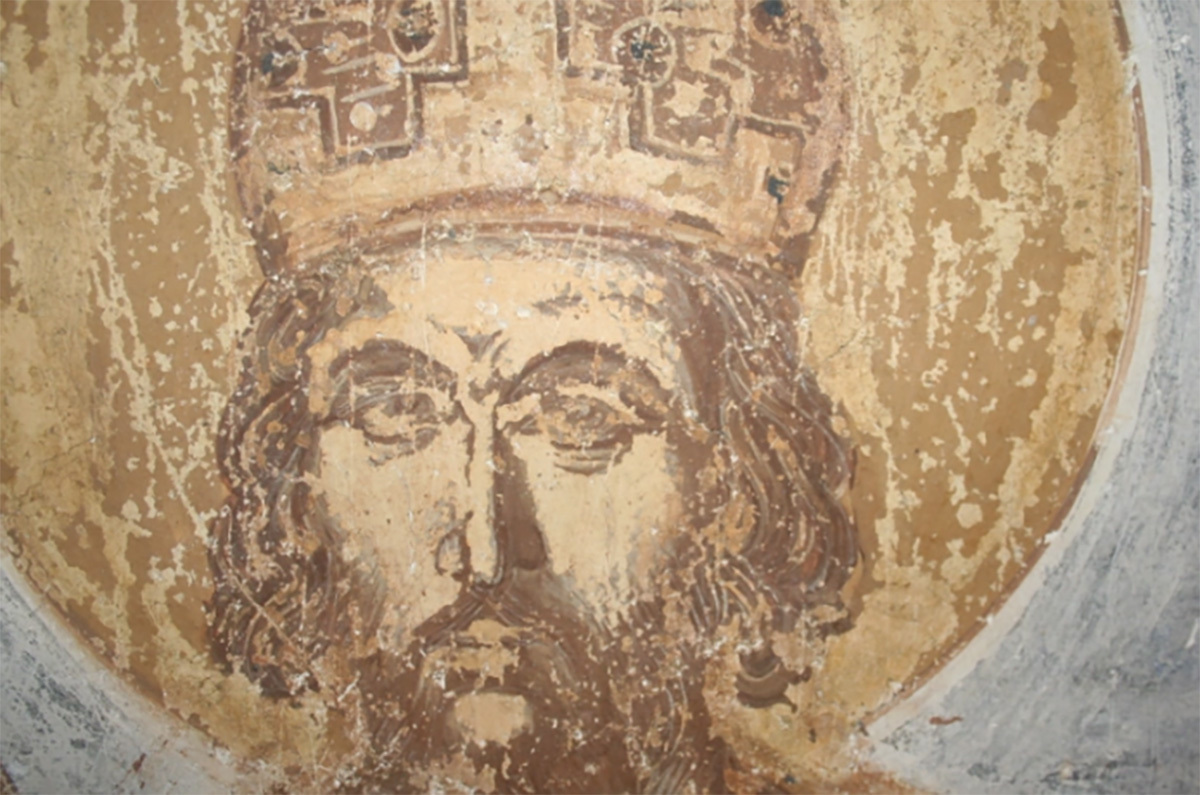
Conservation work by an archaeologist has revealed a previously unknown portrait of the last emperor of Byzantine, Constantine XI Palaiologos (Feb. 8, 1404 – May 29, 1453), dubbed the last Christian ruler of Constantinople, showing his true likeness in a realistic still life painting, not an idealized art work.
The Ministry of Culture for the Greek Government confirmed in a statement that Anastasia Koumousi, director of the Ephorate of Antiquities of Achaia, had been working on late Byzantine era frescoes at the Katholikon of the Old Monastery of Taxiarches of Aigialeia, just 15 km (9 miles) from Aigio. The expert found the portrait within the second layer of the frescoes, dating to the 15th century.
“The work carried out by the Ephorate of Antiquities of the Ministry of Culture,” Minister Lina Mendoni said, “in the context of the conservation and restoration of monuments, is proving, once again, to be extremely important, as it brings to light unique archaeological testimonies associated with historical figures.
“The scientific staff of the Ephorates of the Ministry of Culture, with extensive experience, high training and comprehensive knowledge of both historical events and archaeological data, is able to document, after a thorough study, any finding that comes to light.
“In this case, the portrait is associated with the last emperor of Byzantium and concerns his only living portrait.
“The painter must have rendered the portrait characteristics of the last emperor of Byzantium, Constantine XI, Palaiologos, from his own perception, i.e. his model was not an official imperial portrait, as was customary, but the emperor himself.”
Constantine XI Palaiologos was the “last Christian Emperor of Constantinople and Byzantium,” according to the late English Byzantinist, Donald MacGillivray Nicol, in his authoritative book (1992), “The immortal emperor: the life and legend of Constantine Palaiologos, last emperor of the Romans.”
The emperor died fighting the Ottoman Turks when Constantinople fell in 1453, Nichol said, but various myths have constructed a narrative about his demise with storytellers purporting that he turned into marble to become immortal, with the idea that he would one day be awoken to drive his enemies out of the city.
The portrait revealed by the archaeological find reveals a mature man with an imperial insignia — a luxurious cord over a light-coloured sack with a cross-stone crown — and holding a crusading scepter, confirmed the Greek Ministry of Culture.
A gold-embroidered purple mantle adorns him with medals decorated with double-headed eagles and a crown beneath their heads — the symbol of the Palaiologos family. It is this combination of double-headed eagles in the garment, alongside the remaining insignia, which helped experts deduce the identity of the portrayed man as the emperor.
The archaeological find is the only known portrait of Constantine Palaiologos, who reigned for a short period (Jan. 6, 1449 – May 29, 1453). It is also the “last chronologically preserved portrait of an emperor in Byzantine monumental painting,” added the Ministry of Culture.
“As a portrait it is not idealistic or standardized. It is an authentic portrait, which accurately reflects the physiognomic characteristics of the last Byzantine emperor,” stated the Ministry of Culture. “He is an earthly figure, a mature man, with a slender face and personalized features, who exudes calmness and kindness.”
Constantine XI Palaiologos was the brother of the sponsors, despots Demetrios and Thomas, who renovated the monastery, according to the Ministry of Culture.
This article was originally published at Christian Daily International
Christian Daily International provides biblical, factual and personal news, stories and perspectives from every region, focusing on religious freedom, holistic mission and other issues relevant for the global Church today.







